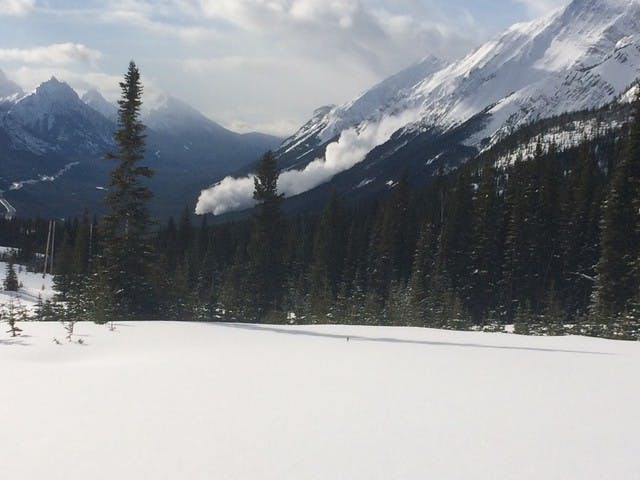- Date
- Monday, March 27, 2017
Full path avalanche potential even with reduced danger ratings below treeline
In the last few days, we're seeing the start of the next phase of the low probability/high consequence scenario. That is , the peristent weak layer(s) that produced a pattern of deep persistent slab avalanches in BC and responsible for the recent major cycle in Alberta are slowly adjusting to the load of the overlying snowpack. Cornices and the upper layers of the snowpack are stabilizing as well and less likely to be triggers for the deeper weak layers. All this results in what's referred to as a "dormant" period.
Dormancy does not mean that no large avalanches will occur. But the probability decreases and it takes some kind of change to "wake up" the dormant layers which starts a new cycle. My previous blog discusses what to watch for in terms of factors that increase the sensitivity of PWLs and potential triggers for deep persistent slab avalanches.
in this blog, I want to talk about this:

- Credit
- Albi Sole
Full path avalanche, March 26, 2017.
As the likelihood of avalanches decreases, danger ratings come down. In particular, Below Treeline ratings often drop to Low in the dormant phase of an LP/HC pattern. However, as illustrated in the photo above, large "full path" avalanches can still occur in these conditions.
To manage risk at times like this, we need to adjust our approach to travelling through and recreating under overhead avalanche terrain when we are below treeline.
Even with reduced danger ratings, as long as deep persistent slabs are listed as a problem in the forecasts or if there's ongoing talk of low-probability/high-consequence events in other venues, it's advisable to eliminate or at least significantly limit exposure to valley-bottom runout zones. Especially when the weather is changing or has recently changed or when there's a potential triggering mechanism, go around runout zones if you can--well around--like in mature timber a couple hundred metres away from the trimline (sides and bottom) of the avalanche path. If you can't do that and are willing to accept the risk then expose only one person at a time, do not stop in the runout zone at all, never group up there, and make sure everyone's across safely before continuing.
It takes training to recognize valley-bottom runouts. Basically, they are open swaths that run through treed areas with large alpine slopes above. If this description isn't clear to you or the terminology I'm using here is a mystery, consider taking a course, travelling only with someone who has the training and experience to know what a runout zone looks like, or hiring a professional to help you manage the potential risk of full-path avalanches.
Karl Klassen
Avalanche Canada Warning Service Manager
kklassen@avalanche.ca